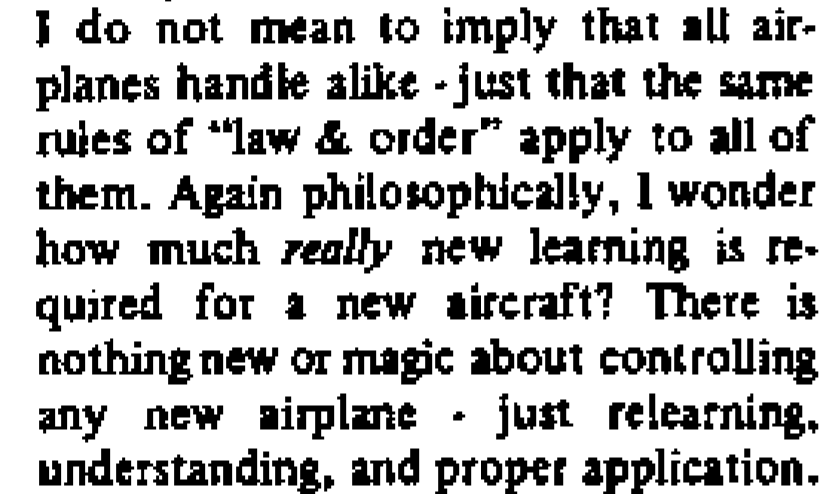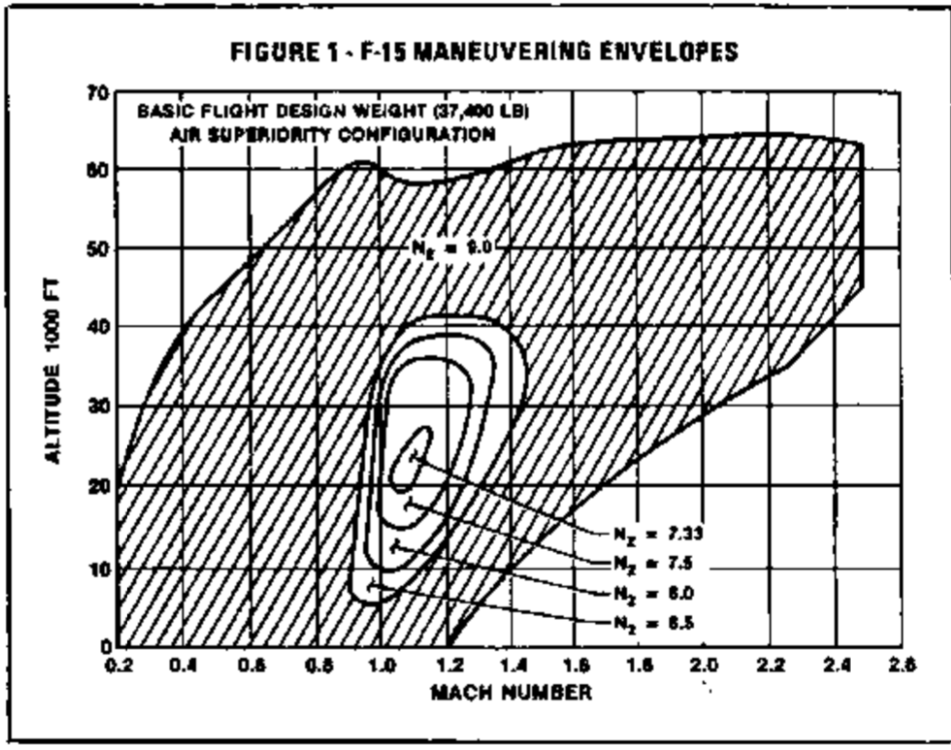-
Posts
1032 -
Joined
-
Last visited
-
Days Won
1
Content Type
Profiles
Forums
Events
Everything posted by Pocket Sized
-

Questions about MiG-21 FM after todays update.
Pocket Sized replied to BadHabit's topic in Flight Dynamics
Out of curiosity, have you ever flown the F-5? Now that's a properly roll sensitive aircraft. -

Questions about MiG-21 FM after todays update.
Pocket Sized replied to BadHabit's topic in Flight Dynamics
I vaguely remember the flight manual mentioning roll coupling at high speed, but at the time I didn't understand the phenomenon well enough to make sense of it. I should be getting my hands on the new update within the next few hours, so we'll see then. -

F-15 still pulling 14G with two bags and no damage
Pocket Sized replied to JunMcKill's topic in F-15C for DCS World
I THINK I've seen what you're describing. Does it sometimes lead to the stabilators "jumping" from one position to another when the stick is near center at high AoA/low airspeed? (Full back stick gives less stab angle than ~1/4 stick deflection) If so, that's something I've been trying to figure out as well. -

F-15 still pulling 14G with two bags and no damage
Pocket Sized replied to JunMcKill's topic in F-15C for DCS World
Do tell. -

Questions about MiG-21 FM after todays update.
Pocket Sized replied to BadHabit's topic in Flight Dynamics
Now the real question: are the disastrous effects of roll coupling modeled? (At high roll rates the aircraft should have a tendency to depart unexpectedly) Also, I'd love it if somebody would go into more detail about the updated stall behavior. I'm away from home and my open beta install is gone. -
Guys, this kind of stuff belongs in PM's.
-

F-15 still pulling 14G with two bags and no damage
Pocket Sized replied to JunMcKill's topic in F-15C for DCS World
Regarding G limits during war time - a damaged airframe is better than no airframe and a dead pilot. You do whatever is necessary to prevent loss of the aircraft, which means pulling the wings off is out of the question, but so is getting shot down or crashing into terrain. Now, if the pilot was using very poor judgment, found himself 70° nose down at 500 knots, and pulled 13G to narrowly avoid a crash, then he repercussions may be slightly different when he gets back to base. -

The new critical angle of attack might be too low!
Pocket Sized replied to Maverick Su-35S's topic in Flight Dynamics
Any changes in this area with the update? -
Relevant quote from an F-15 test pilot attached. Applies to all conventional airplanes/helicopters IMO. But, as BIGNEWY said, for now it's best for us to just wait.
-

F-15 still pulling 14G with two bags and no damage
Pocket Sized replied to JunMcKill's topic in F-15C for DCS World
Hehe - roll coupling is discussed in great detail in the "Eagle talk" document I linked a few pages ago. TL;DR: it is most prevalent in high speed situations and tends to pull the nose and tail away from the axis of rotation, in this case causing an increase in AoA. -

F-15 still pulling 14G with two bags and no damage
Pocket Sized replied to JunMcKill's topic in F-15C for DCS World
Ignoring all other factors, roll coupling should cause a pretty significant G increase. -
"More powerful engines" was a bit of a misnomer; I should have said "better propulsion system." The intakes and airframe allow for care free handling of the engines and a higher top speed. Also, does the Flanker have low bypass engines like the Eagle, or does it use straight turbojets? If the latter, then the Eagle (theoretically) boasts higher fuel efficiency as well. But let's not get sidetracked, the point of what I'm saying is that yes, aircraft are "unbalanced" in reality and in the simulator.
-
The altitude hold autopilot isn't quite right in the Sim when passing through the transonic region. The problem is, pitot/static information is unreliable when passing through Mach 1. If the regular altitude hold function was maintained, there would be massive pitching transients because the indicated altitude would fluctuate dramatically. So the real aircraft mitigates this by switching, briefly, to the INS for altitude information. This behavior in the sim appears to have some quirks, which could be contributing to the issues noted here.
-
I hope they get access to some 1944 sectional charts of the area... will make navigation interesting for sure.
-

Need som help, please! how to???
Pocket Sized replied to buspelle's topic in DCS: Mi-8MTV2 Magnificent Eight
Because nobody has fully explained the practical implications of VRS in plain terms yet: If you're descending straight down in calm air, you WILL enter VRS unless you descend extremely slowly. If you're in forward flight you can dive just like an airplane. Don't come to a hover until you're very close to the ground (less than 10m or so) and keep horizontal speed whenever possible. -
Jack, if you read the real flight manuals for the F-15 and Su-27, you'd see just how different the two are. The F-15 isn't necessarily "a better airplane," it just has greater static stability margins, a more sophisticated control and hydraulic system, more powerful engines, and a tougher airframe. These differences are depicted with reasonable accuracy in the simulation. It's not made up, the Flanker is genuinely a more difficult aircraft to handle. Same goes for the MiG-29. Different countries, different design philosophies. Period.
-

F-15 still pulling 14G with two bags and no damage
Pocket Sized replied to JunMcKill's topic in F-15C for DCS World
Would anyone happen to know why the G limit goes down to 7.33 in that particular region of the flight envelope? Some piece of the airplane getting stressed more than usual? -

F-15 still pulling 14G with two bags and no damage
Pocket Sized replied to JunMcKill's topic in F-15C for DCS World
http://aviationarchives.net/Eagle-Talk-Vol2-Tech.pdf Page 53. -

F-15 still pulling 14G with two bags and no damage
Pocket Sized replied to JunMcKill's topic in F-15C for DCS World
Somebody said something about a chart? (The large, dashed area is where 9G is permissible, the "hole" indicates regions where the allowed G is reduced, down to 7.33 in the center) -

F-15 still pulling 14G with two bags and no damage
Pocket Sized replied to JunMcKill's topic in F-15C for DCS World
If the current hydraulic model is too powerful, I'd suspect it can't be any more than 5% or so. There is a notch just below Mach 1 where you can overstress the real aircraft by A LOT if you're not careful. This notch is modeled, but I don't know if the absolute values are correct. Same goes for the region of reduced lateral stability between 0.55 and 0.75 Mach. -
From what I've heard, low level ops usually occur in the low-mid 400's. So she's pretty quick. Above Mach 0.7-0.8 maneuvers are limited substantially because of transonic flow effects, the plane stalls much more easily near Mach 1 (and usually not symmetrically, think A-10C stall behavior)
-

F-15 still pulling 14G with two bags and no damage
Pocket Sized replied to JunMcKill's topic in F-15C for DCS World
Both of you chill out, please. -

Su-27 - breaking vertcal stabilisers
Pocket Sized replied to Falcon_S's topic in Su-27 for DCS World
He might have been talking about A) During high AoA, high G pulls, the turbulence coming from the wings creates lots of buffeting and flexing in the vertical stabilizers. B) Pulling lots of G while rolling puts huge amounts of lateral stress on the stabilizers, apparently this is where asymmetric G limits come from, but I'm not 100% sure on that. -

F-15 still pulling 14G with two bags and no damage
Pocket Sized replied to JunMcKill's topic in F-15C for DCS World
My mistake, I assumed you meant that the forces themselves would kill you. The intricacies of GLOC modeling is far outside my area of research ;) When I began dogfighting I experienced many crashes caused by GLOC, then I learned how to properly manage my energy... I rarely go past 7-8G now. -

F-15 still pulling 14G with two bags and no damage
Pocket Sized replied to JunMcKill's topic in F-15C for DCS World
What even is G suit While I agree that the current GLOC model could use improvement, especially involving the effects of rapid G onset as opposed to gradual, how could somebody kill themselves via over G if they can't pull on the stick after blacking out? It's like trying to kill yourself by holding your breath too long.




